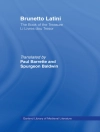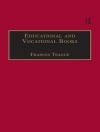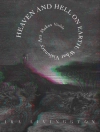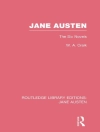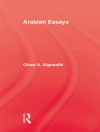The first anthology of critical interpretations of major Canadian short stories.
Beginning in the 1890s, reaching its first full realization by modernist writers in the 1920s, and brought to its heyday during the Canadian Renaissance starting in the 1960s, the short story has become Canada’s flagship genre. Itcontinues to attract the country’s most accomplished and innovative writers today, among them Margaret Atwood, Mavis Gallant, Alice Munro, Clark Blaise, and many others. Yet in contrast to the stature and popularity of the genreand the writers who partake in it, surprisingly little literary criticism has been devoted to the Canadian short story. This book redresses that imbalance by providing the first collection of critical interpretations of thirty well-known and often-anthologized Canadian short stories from the genre’s beginnings through the twentieth century. A historical survey of the genre introduces the volume and a timeline comparing the genre’s development in Canada, the US, and Great Britain completes it. Geared both to specialists in and students of Canadian literature, the volume is of particular benefit to the latter because it provides not only a collection of interpretations, but a comprehensive introduction to the history of the Canadian short story.
Contributors: Reingard M. Nischik, Martina Seifert, Heinz Antor, Julia Breitbach, Konrad Gross, Paul Goetsch, Dieter Meindl, Nina Kück, Stefan Ferguson, Rudolf Bader, Fabienne C. Quennet, Martin Kuester, Jutta Zimmermann, Silvia Mergenthal, Caroline Rosenthal, Wolfgang Klooss, Lothar Hönnighausen, Heinz Ickstadt, Gordon Bölling, Christina Strobel, Waldemar Zacharasiewicz, Maria and Martin Löschnigg, Nadja Gernalzick, Eva Gruber, Brigitte Glaser, Georgiana Banita.
Reingard M. Nischik is Professor of American Literature at the University of Konstanz, Germany.
قائمة المحتويات
The Canadian Short Story: Status, Criticism, Historical Survey – Reingard M. Nischik
Canadian Animal Stories: Charles G.D. Roberts, ‘Do Seek Their Meat from God’ (1892) – Martina Seifert
Tory Humanism, Ironic Humor, and Satire: Stephen Leacock, ‘The Marine Excursion of the Knights of Pythias’ (1912) – Heinz Antor
The Beginnings of Canadian Modernism: Raymond Knister, ‘The First Day of Spring’ (written 1924/25) – Julia Breitbach
From Old World Aestheticist Immoralist to Prairie Moral Realist: Frederick Philip Grove, ‘Snow’ (1926/32) – Konrad Gross
Psychological Realism, Immigration, and City Fiction: Morley Callaghan, ‘Last Spring They Came Over’ (1927) – Paul Goetsch
Modernism, Prairie Fiction, and Gender: Sinclair Ross, ‘The Lamp at Noon’ (1938) – Dieter Meindl
‘An Artful Artlessness’: Ethel Wilson, ‘We Have to Sit Opposite’ (1945) – Nina Kuck
Social Realism and Compassion for the Underdog: Hugh Garner, ‘One-Two-Three Little Indians’ (1950) – Stefan Ferguson
The Perils of Human Relationships: Joyce Marshall, ‘The Old Woman’ (1952) – Rudolf Bader
The Social Critic at Work: Mordecai Richler, ‘Benny, the War in Europe, and Myerson’s Daughter Bella’ (1956) – Fabienne C. Quennet
Myth and the Postmodernist Turn in Canadian Short Fiction: Sheila Watson, ‘Antigone’ (1959) – Martin Kuester
The Modernist Aesthetic: Hugh Hood, ‘Flying a Red Kite’ (1962) – Jutta Zimmermann
Doing Well in the International Thing?: Mavis Gallant, ‘The Ice Wagon Going Down the Street’ (1963) – Silvia Mergenthal
(Un-) Doing Gender: Alice Munro, ‘Boys and Girls’ (1964) – Reingard M. Nischik
Collective Memory and Personal Identity in the Prairie Town of Manawaka: Margaret Laurence, ‘The Loons’ (1966) – Caroline Rosenthal
‘Out of Place’: Clark Blaise, ‘A Class of New Canadians’ (1970) – Wolfgang Klooss
Realsim and Parodic Postmodernism: Audrey Thomas, ‘Aquarius’ (1971) – Lothar Honnighausen
‘The Problem Is to Make the Story’: Rudy Wiebe, ‘Where Is the Voice Coming From?’ (1971) – Heinz Ickstadt
The Canadian Writer as Expatriate: Norman Levine, ‘We All Begin in a Little Magazine’ (1972) – Gordon Bolling
Canadian Artist Stories: John Metcalf, ‘The Strange Aberration of Mr. Ken Smythe’ (1973) – Reingard M. Nischik
‘A Literature of a Whole World and of a Real World’: Jane Rule, ‘Lilian’ (1977) – Christina Strobel
Failure as Liberation: Jack Hodgins, ‘The Concert Stages of Europe’ (1978) – Waldemar Zacharasiewicz
Figures in a Landscape: William Dempsey Valgardson, ‘A Matter of Balance’ (1982) – Maria Loschnigg
Figures in a Landscape: William Dempsey Valgardson, ‘A Matter of Balance’ (1982) – Martin Loschnigg
‘The Translation of the World into Words’ and the Female Tradition: Margaret Atwood, ‘Significant Moments in the Life of My Mother’ (1983) – Reingard M. Nischik
‘Southern Preacher’: Leon Rooke, ‘The Woman Who Talked to Horses’ (1984) – Nadja Gernalzick
Nativeness as Third Space: Thomas King, ‘Borders’ (1991) – Eva Gruber
Digressing to Inner Worlds: Carol Shields, ‘Our Men and Women’ (1999) – Brigitte Glaser
A Sentimental Journey: Janice Kulyk Keefer, ‘Dreams:Storms:Dogs’ (1999) – Georgiana Banita
Further Reading on the Canadian Short Story
Time Chart: The Short Story in the USA, Canada, and Great Britain
Notes on the Contributors
Index



